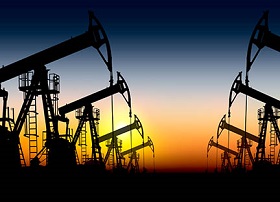Fossil fuel
Fossil fuels are types of non-renewable fuels formed by over millions of years by the anaerobic decomposition of organisms buried beneath or within soil and rock. They are considered to be non-renewable because the rate at which they are currently consumed is far in excess of the rate at which they are naturally replaced, and so they are being rapidly depleted.
Fossil fuels include:
Fossil fuels, contain energy that originated in photosynthesis. They can be burnt in air, or oxygen, to provide heat, which can be used directly, or converted into energy such as electricity. The Industrial Revolution drastically increased the consumption of fossil fuels to the contemporaneous point where levels are widely considered to be unsustainable, hence the drive for large-scale up-take of renewable energy sources.
Types of fossil fuel extraction, such as shale gas, have intensified the debate over whether or not modern and intensive methods should be employed for the further exploitation of non-renewable energy sources.
Burning fossil fuels produces carbon dioxide (and other pollutants) which is a greenhouse gas and so contributes to climate change.
NB Climate Emergency Design Guide: How new buildings can meet UK climate change targets, published by the London Energy Transformation Initiative (LETI) in January 2020, defines a fossil fuel as: 'A natural fuel such as petroleum, coal or gas, formed in the geological past from the remains of living organisms. The burning of fossil fuels by humans is the largest source of emissions of carbon dioxide, which is one of the greenhouse gases that allows radiative forcing and contributes to global warming.'
[edit] Related articles on Designing Buildings Wiki
- Biomass.
- Carbon capture and storage.
- Coal usage for electricity generation to end by October 2024.
- Electric vehicles.
- Energy.
- Liquefied petroleum gas (LPG).
- Mains gas.
- Natural gas.
- Not a choice between renewables and nuclear - we need both.
- Oil - a global perspective.
- Peak oil.
- Phosphorescent building materials.
- Power generation.
- Renewable energy.
- Shale gas.
- Types of fuel.
- Wood pellet mill basics.
Featured articles and news
UK Infrastructure: A 10 Year Strategy. In brief with reactions
With the National Infrastructure and Service Transformation Authority (NISTA).
Ebenezer Howard: inventor of the garden city. Book review.
The Grenfell Tower fire, eight years on
A time to pause and reflect as Dubai tower block fire reported just before anniversary.
Airtightness Topic Guide BSRIA TG 27/2025
Explaining the basics of airtightness, what it is, why it's important, when it's required and how it's carried out.
Construction contract awards hit lowest point of 2025
Plummeting for second consecutive month, intensifying concerns for housing and infrastructure goals.
Understanding Mental Health in the Built Environment 2025
Examining the state of mental health in construction, shedding light on levels of stress, anxiety and depression.
The benefits of engaging with insulation manufacturers
When considering ground floor constructions.
Lighting Industry endorses Blueprint for Electrification
The Lighting Industry Association fully supports the ECA Blueprint as a timely, urgent call to action.
BSRIA Sentinel Clerk of Works Training Case Study
Strengthening expertise to enhance service delivery with integrated cutting-edge industry knowledge.
Impact report from the Supply Chain Sustainability School
Free sustainability skills, training and support delivered to thousands of UK companies to help cut carbon.
The Building Safety Forum at the Installershow 2025
With speakers confirmed for 24 June as part of Building Safety Week.
The UK’s largest air pollution campaign.
Future Homes Standard, now includes solar, but what else?
Will the new standard, due to in the Autumn, go far enough in terms of performance ?
BSRIA Briefing: Cleaner Air, Better tomorrow
A look back at issues relating to inside and outside air quality, discussed during the BSRIA briefing in 2023.
Restoring Abbotsford's hothouse
Bringing the writer Walter Scott's garden to life.
Reflections on the spending review with CIAT.
Retired firefighter cycles world to raise Grenfell funds
Leaving on 14 June 2025 Stephen will raise money for youth and schools through the Grenfell Foundation.
Key points for construction at a glance with industry reactions.
























